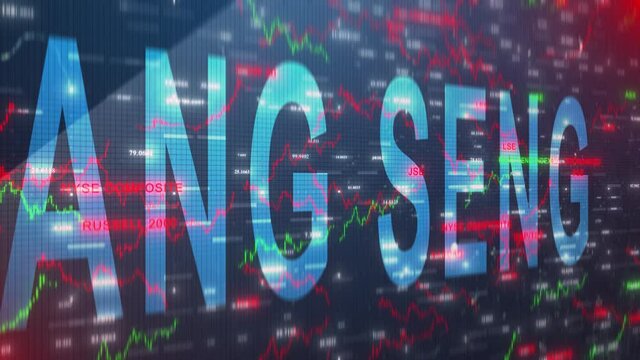The Hang Seng Index (HSI) is currently grappling with significant market volatility as it seeks to regain momentum in early 2025.
After a challenging start to the year, the index remains under pressure from both global and regional factors, leaving investors and analysts speculating about whether a breakout is on the horizon or if further downside risks remain.
Market Overview
The year began with the Hang Seng Index struggling to find its footing, reflecting broader concerns about the global economic landscape.
A combination of rising interest rates in major economies, a strong U.S. dollar, and subdued capital inflows into Asian markets has created a challenging environment for Hong Kong equities.
Additionally, China’s slower-than-expected economic recovery has added to the uncertainty, as investors remain cautious about the effectiveness of Beijing’s stimulus measures.
Domestically, Hong Kong’s economy is also facing headwinds.
The real estate sector continues to experience weakness, and consumer sentiment remains fragile.
These local challenges, coupled with external pressures such as geopolitical tensions and trade uncertainties, have contributed to the index’s lackluster performance so far this year.
Technical Analysis: Key Levels to Watch
From a technical standpoint, the Hang Seng Index is at a critical juncture. After testing its 200-day moving average in January, the index has shown signs of stabilization but remains far from confirming a bullish breakout.
Key resistance levels are currently observed at 21,300 and 23,200 points. Breaking above these levels would signal renewed upward momentum and could attract fresh buying interest.On the downside, support levels are identified at 18,500 points.
A breach below this level could lead to further declines, potentially exposing the index to lower support zones around 16,900 points.
The current consolidation phase suggests that traders are waiting for clearer directional cues before committing to significant positions.
Momentum indicators such as the Relative Strength Index (RSI) suggest that the index is neither overbought nor oversold, reflecting a neutral sentiment in the short term.
However, any sustained move above key resistance levels could shift market sentiment decisively toward a bullish outlook.
Investor Sentiment and Broader Implications
Investor sentiment remains cautious amid mixed signals from global markets. While some sectors in Hong Kong may benefit from China’s ongoing policy support—such as technology and green energy—uncertainty around U.S.-China relations continues to weigh on broader market confidence.
The potential for further interest rate hikes by global central banks also poses risks for equity markets in Hong Kong and beyond. Despite these challenges, there are reasons for optimism.
If China’s economic recovery gains traction in the coming months and geopolitical tensions ease, the Hang Seng Index could see improved capital inflows and stronger performance across key sectors.
Additionally, any signs of monetary easing or fiscal stimulus could serve as catalysts for renewed investor interest.
Outlook: A Delicate Balancing Act
The Hang Seng Index finds itself at a pivotal moment as it navigates through market volatility and mixed economic signals.
While technical indicators suggest that a breakout is possible if key resistance levels are breached, broader macroeconomic factors will ultimately determine its trajectory.
Investors should remain vigilant and prepared for continued fluctuations while keeping an eye on developments in China’s economy, global monetary policy trends, and geopolitical dynamics.
In this uncertain environment, patience and adaptability will be essential for market participants seeking opportunities within Hong Kong’s equity market.
While risks remain elevated, periods of volatility often present opportunities for those who can identify emerging trends and position themselves accordingly.
Also Read

